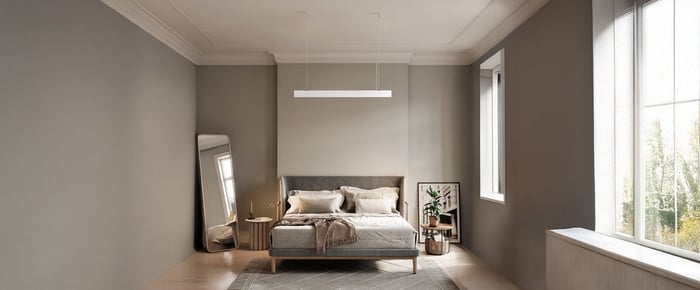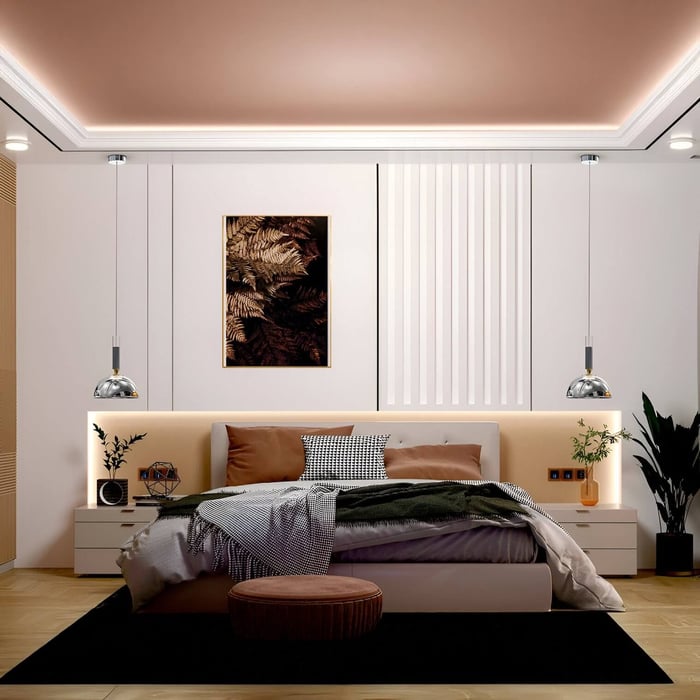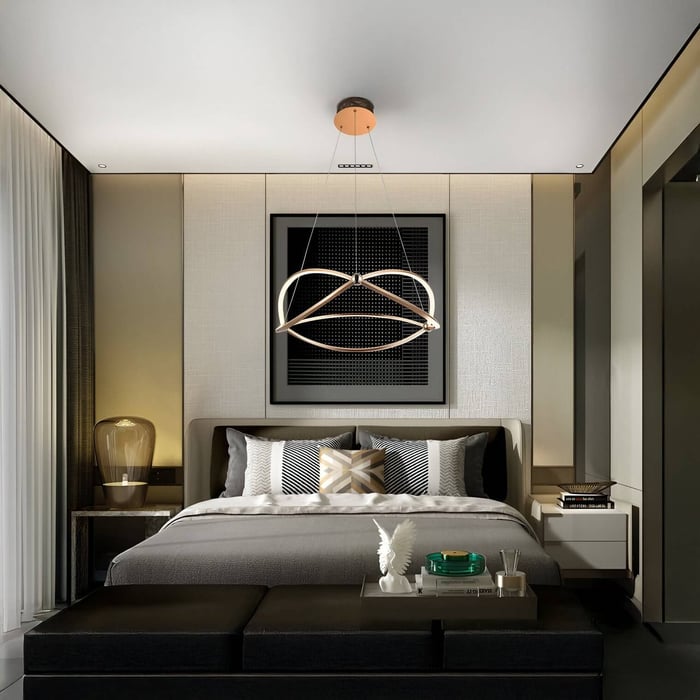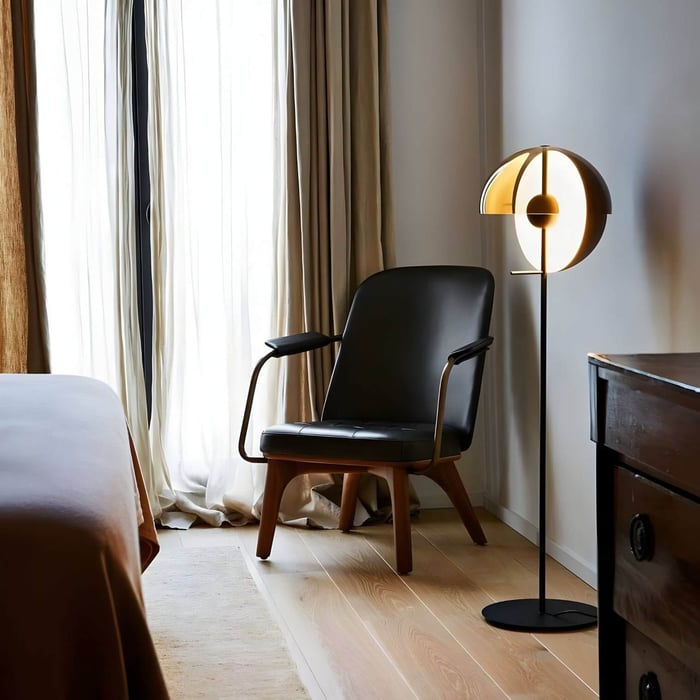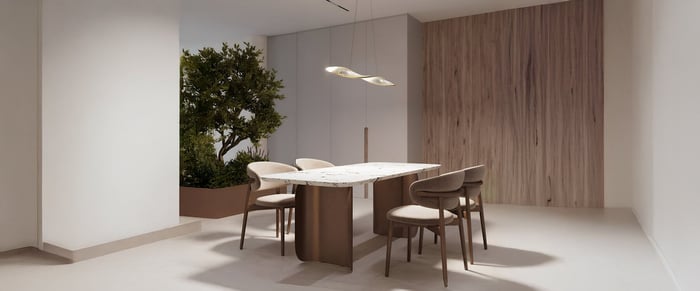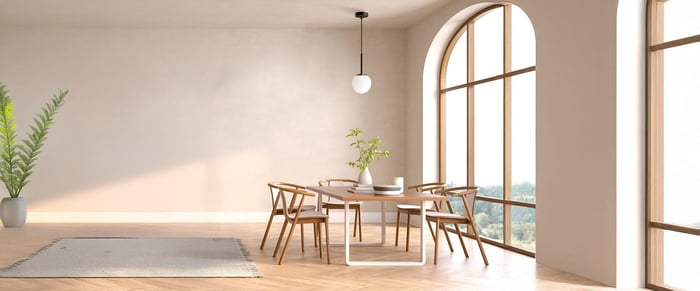Introduction
When it comes to designing a restful and functional space, bedroom lights play a far more critical role than most people realize. Many homeowners rely solely on one ceiling fixture and wonder why the space feels flat, sterile, or uninviting. The truth is, a well-lit bedroom isn’t just about brightness, it’s about balance, mood, and purpose.
Effective bedroom lights create an atmosphere that supports winding down at night, waking up with clarity, and everything in between. Whether you’re refreshing your space or starting from scratch, getting the lighting right can completely change how the room feels and functions.
This guide covers five foundational rules of bedroom lighting design, offering expert-backed advice, practical tips, and fixture suggestions including pendant lights, ceiling lights, modern floor lamps, and table lamps. Let’s illuminate what works.
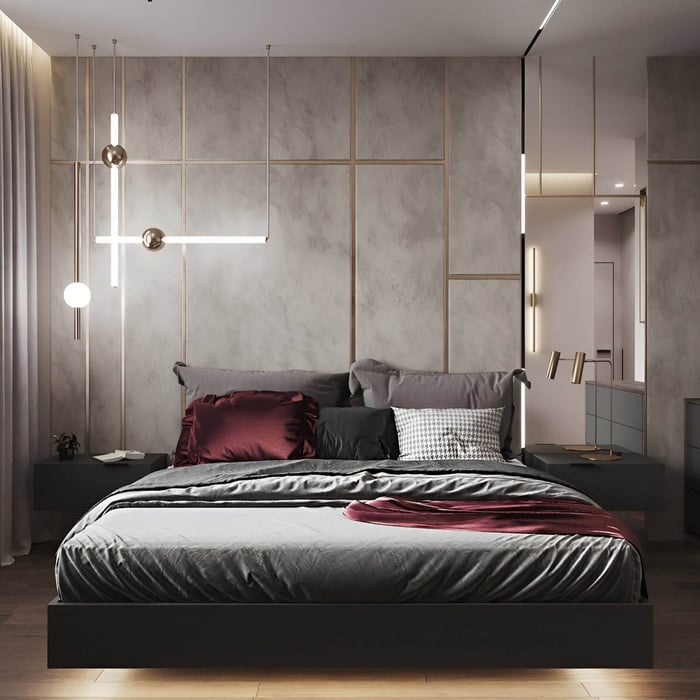
Rule 1: Layer Your Bedroom Lights for Balance and Flexibility
Good lighting design starts with layering. Relying on a single source, like a ceiling fixture, creates uneven illumination and limited ambiance. Instead, aim to incorporate three types of bedroom lights:
Ambient lighting: The main light source, typically overhead, that provides general illumination. This can come from flush-mount ceiling lights, large pendant lights, or integrated LED fixtures.
Task lighting: Lights focused on specific functions, such as reading in bed or dressing. Common options include table lamps on nightstands or adjustable sconces near a vanity.
Accent lighting: Used to highlight design features or add softness. This could be LED strips behind a headboard or dimmable cove lighting near the ceiling.
Layering lets you adapt your lighting to suit different times of day or activities. In the morning, you might need full illumination to get dressed. At night, soft task lighting helps you wind down. A layered scheme ensures your lighting supports every need.
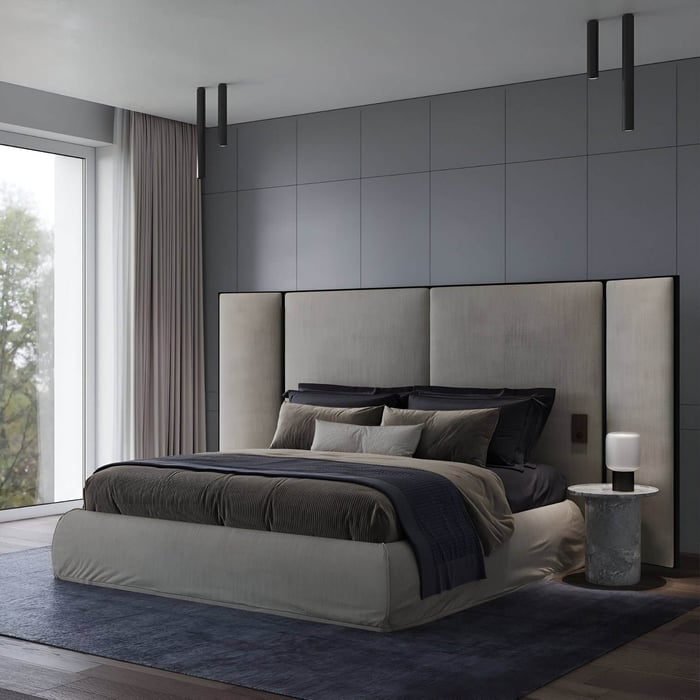
Rule 2: Avoid Harsh Overheads, Use Dimmable Ceiling Lights
Overhead fixtures are often the default source of light in bedrooms, but harsh or overly bright ceiling bulbs can make the space feel clinical. The solution? Choose dimmable ceiling lights that let you control intensity and tone.
Dimmable bedroom lights allow you to shift from bright and functional to soft and soothing with a single adjustment. Look for fixtures with warm white bulbs (2700K–3000K) to avoid blue-toned glare, which can interfere with your body’s ability to wind down.
If your room has low ceilings, flush or semi-flush options keep things proportional. In taller spaces, a sculptural pendant or chandelier can act as both ambient lighting and a focal point.
Pro tip: Always use layered dimming zones. Don’t just rely on one dimmer switch. You’ll get better results by assigning different switches to your ceiling fixture, bedside lamps, and accent lighting.
Rule 3: Add Style and Function with Pendant Lights and Table Lamps
The right combination of pendant lights and table lamps can transform a bedroom from flat to finished. These fixtures are essential for both style and utility, especially near beds and sitting areas.
Pendant lights are a bold, space-saving alternative to traditional bedside lamps. Suspended from the ceiling, they free up surface area while offering targeted task lighting for reading or ambient glow at night. Choose adjustable models so you can fine-tune the hanging height for each bedside.
Table lamps, on the other hand, offer flexibility and ease of placement. They can be swapped out or updated seasonally to refresh your decor, and many now include dimmers or smart bulb integration for better control.
To tie these pieces into your scheme, coordinate finishes, brushed brass, matte black, or wood accents, with other elements in the room like hardware, curtain rods, or bed frames. This keeps your lighting cohesive and visually grounded.
Rule 4: Consider Light Temperature for Sleep and Ambience
One of the most overlooked factors in bedroom lights is color temperature. The quality of light, whether warm or cool, has a huge impact on how your space feels and how well you rest.
Aim for warmer tones (2700K–3000K) in bedroom spaces. These mimic the natural dimming of daylight and encourage melatonin production, which helps your body prepare for sleep. Avoid bright white or cool daylight bulbs in bedrooms unless they’re used only in task-specific areas like a dressing mirror.
You can also use tunable smart bulbs that allow you to shift the color temperature throughout the day, cooler in the morning for alertness, warmer in the evening for relaxation.
Remember: bedroom lights aren't just about visibility, they are about supporting a healthy sleep routine and creating a space you actually want to retreat to.
Rule 5: Use Modern Floor Lamps for Flexible Lighting Zones
Lighting zones are areas in the room that serve different functions, like a reading nook, makeup station, or lounging space. Modern floor lamps are an excellent way to create or enhance these zones without the need for hardwiring or ceiling fixtures.
The beauty of modern floor lamps is their mobility and variety. Arched designs can reach over furniture to spotlight a reading chair. Tripod models add sculptural interest. Slim-profile LED lamps work well in tight spaces and often come with dimmable features and color temperature control.
By using a floor lamp in one corner of the bedroom and a table lamp near the bed, you create balance and functionality across the entire room. You also minimize shadows, making the space feel warmer and more comfortable.
Choose floor lamps with adjustable heads or swivels to direct light exactly where it’s needed, and change it up whenever you want.
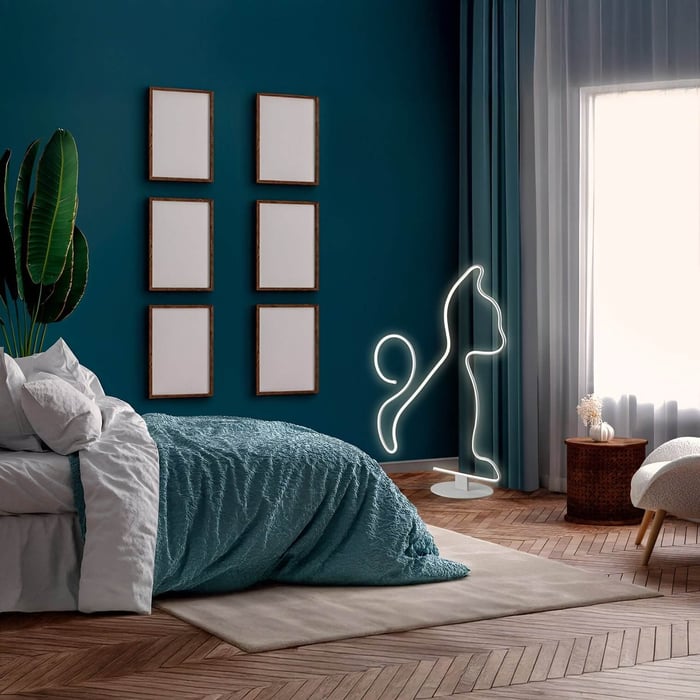
Conclusion
Designing the perfect bedroom lights scheme is about more than choosing a nice fixture, it’s about supporting the way you live, rest, and recharge. When done well, bedroom lights can completely transform your space from functional to restful, from sterile to inviting.
Let’s recap the five golden rules:
Layer your lighting to create depth and flexibility.
Avoid harsh overheads with dimmable ceiling options.
Incorporate pendant and table lamps for both utility and style.
Choose the right color temperature to support better sleep.
Use modern floor lamps to define functional zones with elegance.
Whether you're revamping your master suite or setting up a guest room, applying these principles will help you achieve a lighting plan that looks good and feels right.
Explore our curated collection of bedroom lights to find solutions that fit your needs, whether you're searching for sculptural pendant lights, space-saving table lamps, or flexible modern floor lamps at Niori.
